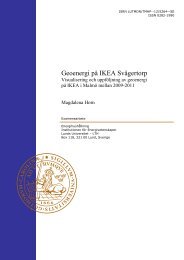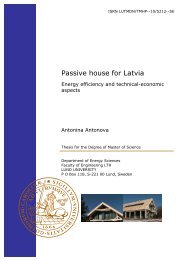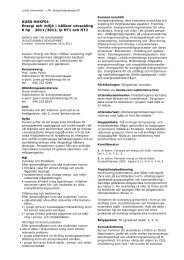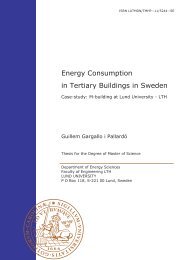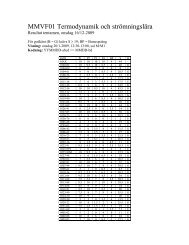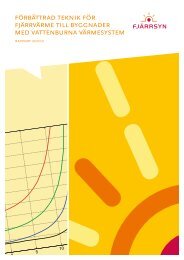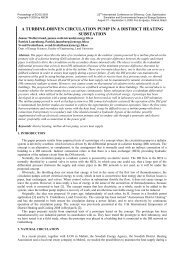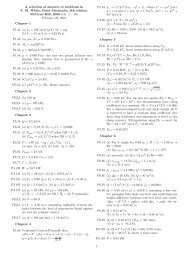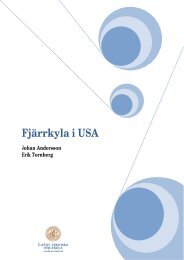MODERN THERMAL POWER PLANTS
MODERN THERMAL POWER PLANTS
MODERN THERMAL POWER PLANTS
Create successful ePaper yourself
Turn your PDF publications into a flip-book with our unique Google optimized e-Paper software.
3 Analysing Combined Cycle Power<br />
Plants<br />
The transfer of heat from the gas turbine exhaust to the steam cycle is vital for the<br />
overall efficiency of the CCPP. This is done by the HRSG. It is important to<br />
understand the HRSG process, and how it is affected by cycle parameters and cycle<br />
features. The process of the HRSG can be visualized in a temperature-to-heat-flux<br />
diagram (T-Q diagram). In this chapter the T-Q diagram is explained and it is used<br />
to analyse how some cycle features can improve the efficiency of a CCPP.<br />
3.1 The T-Q diagram<br />
The HRSG should be designed with consideration to both the first and second laws<br />
of thermodynamics. The most important cycle features determining the behaviour<br />
of the HRSG are the number of pressure levels and whether reheating is<br />
implemented or not. Other considerations include how and where deaeration is<br />
performed and the heat-transfer area, i.e. the magnitude of the pinch point.<br />
The use of T-Q diagram is crucial in understanding and designing combined<br />
cycles. Figure 5 shows the T-Q diagram for a single-pressure combined cycle with<br />
100 bar admission pressure and a turbine inlet temperature of 565 °C. The T-Q<br />
diagram in Figure 5 originates from a single-pressure CCPP, and shows the<br />
temperature profile of the heat recovery process. The smallest temperature difference<br />
in the HRSG is called the pinch-point, and is located on the cold side of the<br />
evaporator. The upper continuous line, with an almost constant slope, represents the<br />
temperature profile of the flue-gas, and the lower line represents the temperature of<br />
the water/steam. The HRSG of a single-pressure combined cycle consists of three<br />
different sections. Starting at the lowest temperature, the first section is called the<br />
economizer, and is where liquid water is heated to the saturation temperature. To<br />
avoid evaporation, which could cause steam blockage that may result in “water<br />
hammering” [12] in the economizer, the outlet temperature is always kept a few<br />
degrees below the saturated state. This temperature difference is called the approach<br />
point.<br />
15




